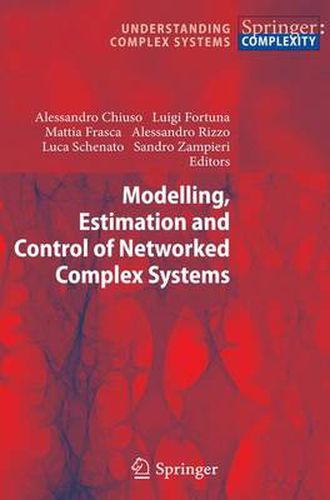Readings Newsletter
Become a Readings Member to make your shopping experience even easier.
Sign in or sign up for free!
You’re not far away from qualifying for FREE standard shipping within Australia
You’ve qualified for FREE standard shipping within Australia
The cart is loading…






This title is printed to order. This book may have been self-published. If so, we cannot guarantee the quality of the content. In the main most books will have gone through the editing process however some may not. We therefore suggest that you be aware of this before ordering this book. If in doubt check either the author or publisher’s details as we are unable to accept any returns unless they are faulty. Please contact us if you have any questions.
The paradigm of complexity is pervading both science and engineering, le- ing to the emergence of novel approaches oriented at the development of a systemic view of the phenomena under study; the de?nition of powerful tools for modelling, estimation, and control; and the cross-fertilization of di?erent disciplines and approaches. One of the most promising paradigms to cope with complexity is that of networked systems. Complex, dynamical networks are powerful tools to model, estimate, and control many interesting phenomena, like agent coordination, synch- nization, social and economics events, networks of critical infrastructures, resourcesallocation,informationprocessing,controlovercommunicationn- works, etc. Advances in this ?eld are highlighting approaches that are more and more oftenbasedondynamicalandtime-varyingnetworks,i.e.networksconsisting of dynamical nodes with links that can change over time. Moreover, recent technological advances in wireless communication and decreasing cost and size of electronic devices are promoting the appearance of large inexpensive interconnected systems, each with computational, sensing and mobile ca- bilities. This is fostering the development of many engineering applications, which exploit the availability of these systems of systems to monitor and control very large-scale phenomena with ?ne resolution.
$9.00 standard shipping within Australia
FREE standard shipping within Australia for orders over $100.00
Express & International shipping calculated at checkout
This title is printed to order. This book may have been self-published. If so, we cannot guarantee the quality of the content. In the main most books will have gone through the editing process however some may not. We therefore suggest that you be aware of this before ordering this book. If in doubt check either the author or publisher’s details as we are unable to accept any returns unless they are faulty. Please contact us if you have any questions.
The paradigm of complexity is pervading both science and engineering, le- ing to the emergence of novel approaches oriented at the development of a systemic view of the phenomena under study; the de?nition of powerful tools for modelling, estimation, and control; and the cross-fertilization of di?erent disciplines and approaches. One of the most promising paradigms to cope with complexity is that of networked systems. Complex, dynamical networks are powerful tools to model, estimate, and control many interesting phenomena, like agent coordination, synch- nization, social and economics events, networks of critical infrastructures, resourcesallocation,informationprocessing,controlovercommunicationn- works, etc. Advances in this ?eld are highlighting approaches that are more and more oftenbasedondynamicalandtime-varyingnetworks,i.e.networksconsisting of dynamical nodes with links that can change over time. Moreover, recent technological advances in wireless communication and decreasing cost and size of electronic devices are promoting the appearance of large inexpensive interconnected systems, each with computational, sensing and mobile ca- bilities. This is fostering the development of many engineering applications, which exploit the availability of these systems of systems to monitor and control very large-scale phenomena with ?ne resolution.